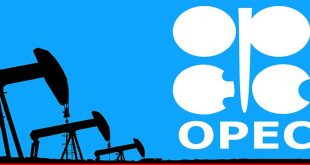Presently Brent oil sank to $36.05 a barrel — its weakest since July 2004 — before recovering slightly to $36.56. A worldwide oversupply has dramatically driven down the oil price, with suppliers declining to reach deals to address the glut. Just 18-month ago, in June last year, the price of oil was traded at $115 per barrel.
The price of US crude was also recorded down this week, dropping 40 cents to $34.17 a barrel — the lowest since 2009.
Oil experts have stated that there is little sign that the downward trend would alter, with more Russian and US oil reaching the markets. Iranian oil supply would also resume during 2016, following the lifting of sanctions. In November, the 12 members of Organization of Petroleum Exporting Countries (OPEC) sustained production at 30 million barrels per day, as first agreed in December 2011. Various consumers have enjoyed the declining price of fuel in the form of lower petrol rates; many UK supermarkets have started selling petrol at below pound1 per liter — which they last did during 2009.
It is also said that Iran’s return to the oil market is also the cause for reduction in oil prices. Sanctions against Iran could be lifted as early as January 2016 and all these developments resulted in bringing foreign oil prices to the lowest level of previous 11-year.
|
DAILY BASKET PRICE IN DECEMBER 2015
|
|
|---|---|
| DATE | ($ PER BARREL) |
| 1 | 39.25 |
| 2 | 38.40 |
| 3 | 37.84 |
| 4 | 38.03 |
| 7 | 36.40 |
| 8 | 35.25 |
| 9 | 34.74 |
| 10 | 34.64 |
| 11 | 33.71 |
| 14 | 32.55 |
| 15 | 32.56 |
| 16 | 32.28 |
| 17 | 31.49 |
| 18 | 31.63 |
| 21 | 30.74 |
| 22 | 31.15 |
However, oil companies have had profit margins squeezed, forcing them to cut spending in exploration and investment.
Governments of some oil-producing states have also been forced to cut investing as revenue from oil plunging.
Unfortunately, the advantage of historic oil price decline in the global market has not completely been passed on to the general public in Pakistan while its impact on natural gas, which is also connected with global prices is not visible in the regulated POL prices. In the country, it has been the practice that the government raises the GST on POL products to sustain its revenue collection while the consumers and general public are deprived of this advantage. It had been continuously stating the government for giving a level playing field for traders and industry to compete and play their due role in the nationwide economy.
In the global market the petroleum products prices have been declined and the government immediately shift the advantage of reduction of price on POL products to the general public and consumers, which will lead to fall in inflation rate and ultimately transform into enhancing their purchasing power.
Oil market experts revealed that USA and European states offer full relief to its consumers through minimising the rates of petroleum products. Surprisingly why the petrol price is up to 100 percent higher in most European states as compared to Pakistan and whether petrol in the country was cheaper than in almost every state of the region counting Bangladesh and India.
It is said for lowering oil rates in Pakistan in order to give level playing field to the general public counting trade and industry people.
This process would also lead to increase in the industrial production and competitiveness. This step may also decline the cost of energy, which would be helpful to the government in managing the present power shortfalls in Pakistan. It is also believed that the falling trend of oil rates would not only cover POL products but also cover greater than 100 byproducts, which are utilized through general public.
The plastic goods, nylon, Vaseline, rayon, synthetics, fiber, glycerin, PTA, PSF and various pharmaceutical commodities are added in oil’s byproducts. By falling prices of oil, the cost of these products would also be declined.
It was also recorded that the current consumption of petrol in Pakistan has reached 430,000 barrels per month, which one year ago was almost 330,000 barrels per month. The upward consumption of petrol has grown the tax collections.
In Pakistan, the present prices of petroleum products are expected to decline up to Rs4.5 per liter from January 1, 2016, because of fluctuation of global crude oil prices during November and December. However, the prices of petrol in domestic market are to be declined by Rs1.54 per liter while prices of HOBC (high octane blending component) are to be declined by Rs4.5 per liter.
Experts said that if the Government of Pakistan did not rise GST (general sales tax) on petroleum products from January 1 2016, the prices of HSD (high speed diesel) is expected to be declined by Rs2.60 per liter, KO (kerosene oil) by Rs3.70 per liter and Light Diesel Oil by Rs3.45 per liter.
Presently, dissimilar petroleum products are being sold on following rates in the domestic market: High Speed Diesel at Rs83.79 per liter, Light Speed Diesel at Rs53.59 per liter, HOBC at Rs79.79 per liter, petrol at Rs76.26 per liter and Kerosene Oil at Rs57.11 per liter.
 PAGE Blog Business Weekly Magazine
PAGE Blog Business Weekly Magazine

